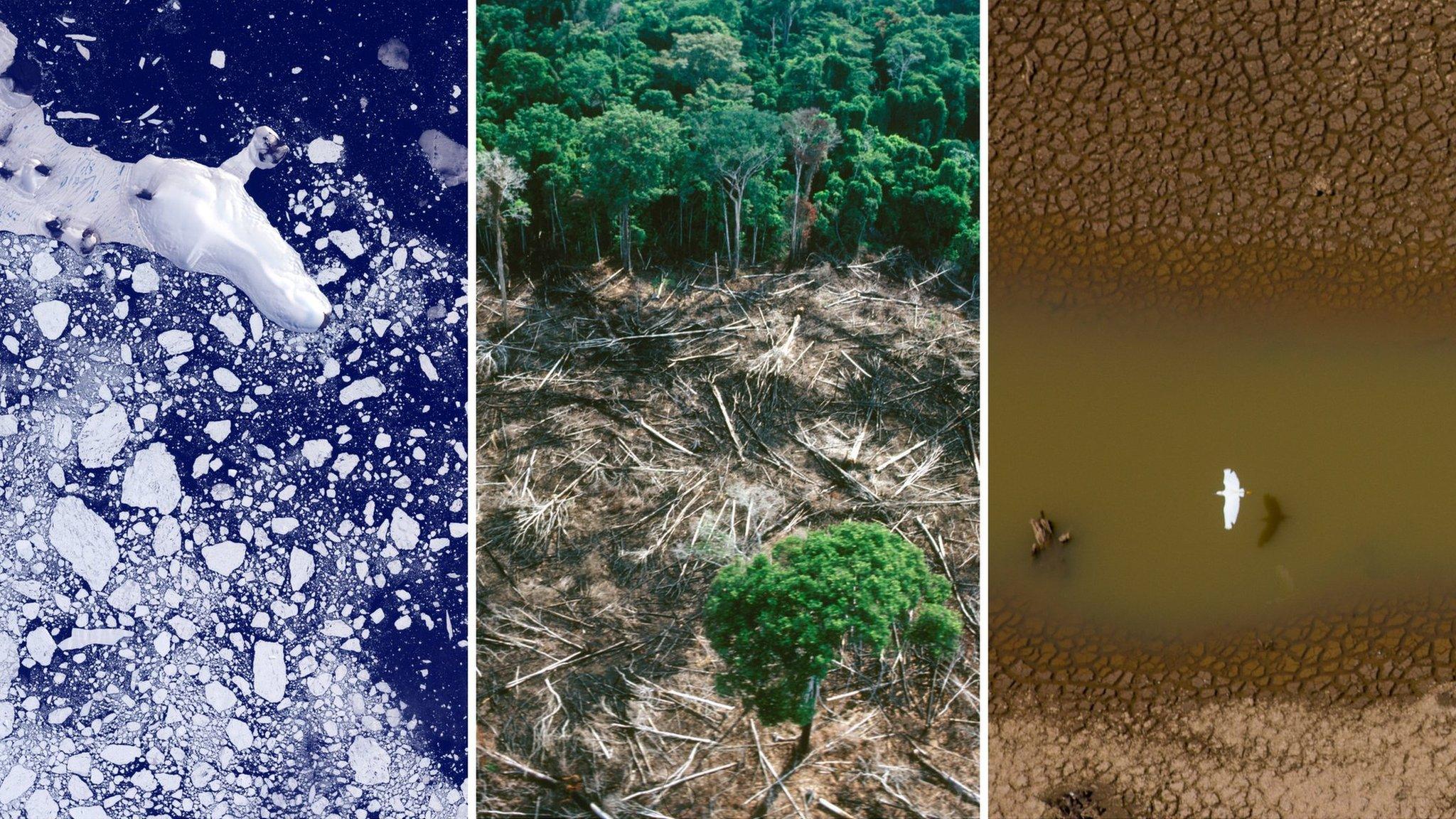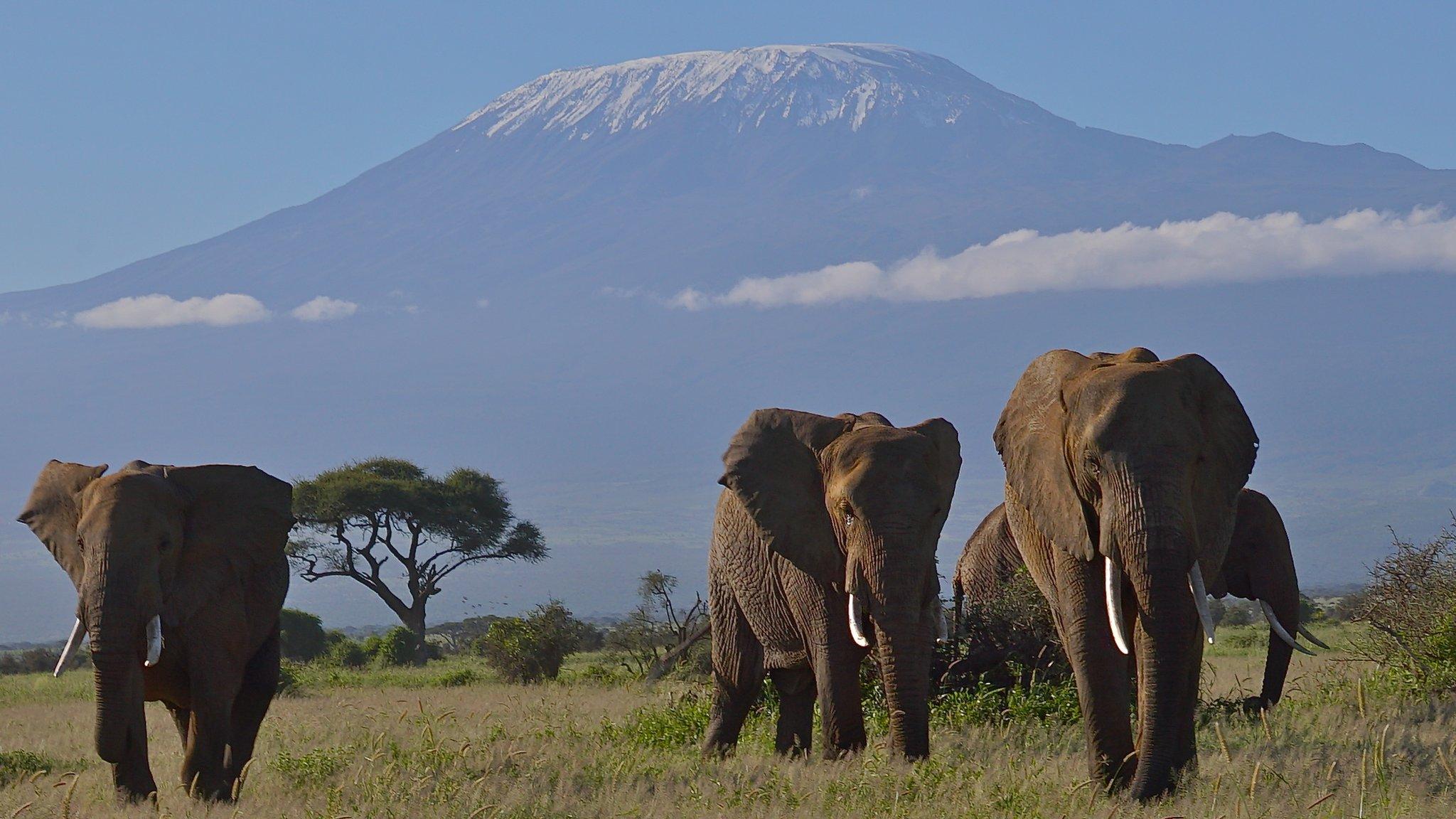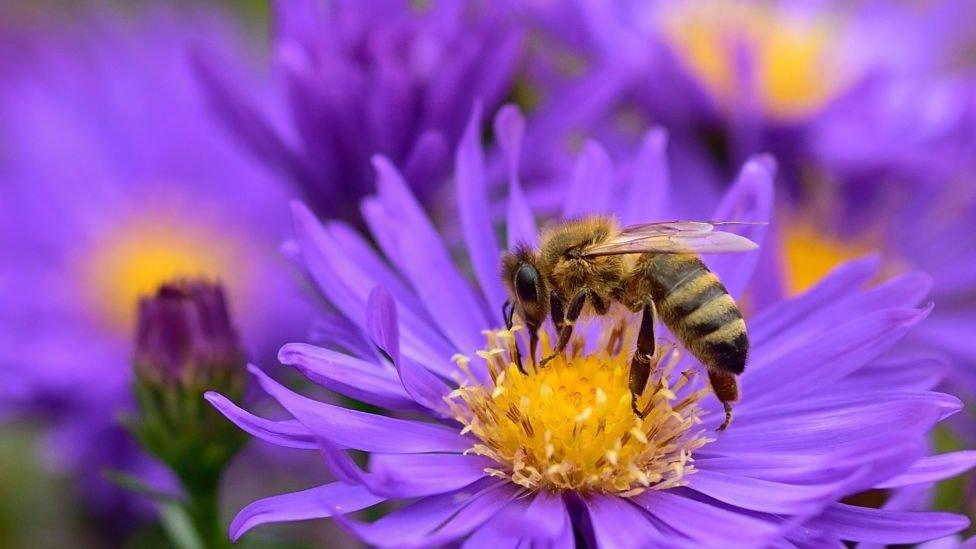Komodo dragons: Everything you need to know about the large lizards
- Published
- comments

The Komodo dragon is the world's largest living lizard, but these colossal creatures are under threat.
They have been added to the International Union for Conservation of Nature's (IUCN) 'Red List' and are now an endangered species.
In 1956, Sir David Attenborough and his team were the first crew to ever capture the amazing animals on camera, but they remain mysterious.
So what do we know about them and why are they at risk of extinction?

Komodo National Park is a Unesco World Heritage site
Where do Komodo dragons live?
Komodo dragons are native to just one tiny corner of the globe - a handful of islands in Indonesia - the Komodo National Park.
The Southeast Asian park is a Unesco World Heritage site and is made up of five islands, with 70% of it made up of ocean.
The creatures have survived there for hundreds of thousands of years.
Humans also live on the island and believe they have a special connection to the dragons.
Komodo dragons are fierce fighters and are very powerful
They use their tails as defensive weapons and have no natural predators
The large lizards have razor-sharp backwards-facing teeth, long fork tongues and their venom is so poisonous it could kill a person within hours of a bite
They weigh around 150kg (300lb)
They can reach around 3 metres (10ft) in length
Komodo dragons feed on meat, including deer
Why are they now endangered?
Most of the Komodo population - around 1,700 - live on Komodo Island, and around one thousand more live on Rinca, another island in the park, but their habitat is shrinking quickly.
Craig Hilton-Taylor, head of the IUCN's 'Red List' said: "Because of global warming and climate change, rising sea levels mean that the species is going to lose 30% of its habitat in the next 30 to 40 years."
Are any other animals at risk?
Experts at the IUCN assessed more than 130,000 species and found more than a quarter are at risk of extinction.
The conservation group also says that two in five sharks are now endangered, and rays are facing a similar threat.
The report was released at a global conservation summit in France, which brought together thousands of scientists, conservation experts and campaigners.
The conference was officially opened by French President Emmanuel Macron who said: "The battle for the climate, against climate disruption is twinned with the battle to preserve and restore biodiversity."
- Published20 January 2020

- Published6 September 2020

- Published7 May 2019

